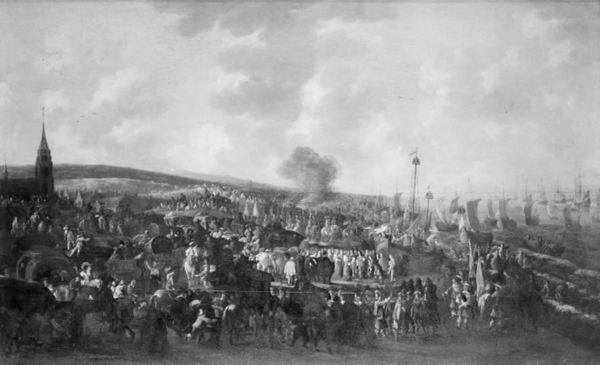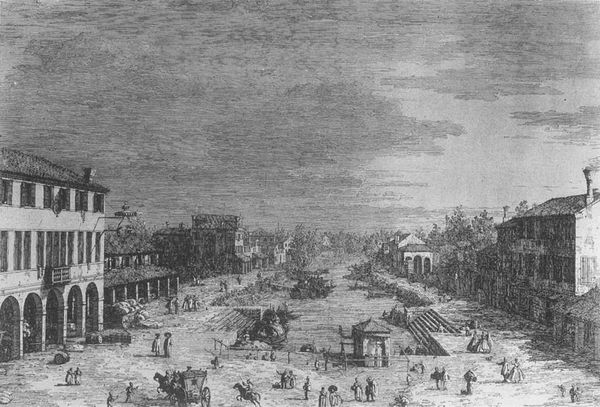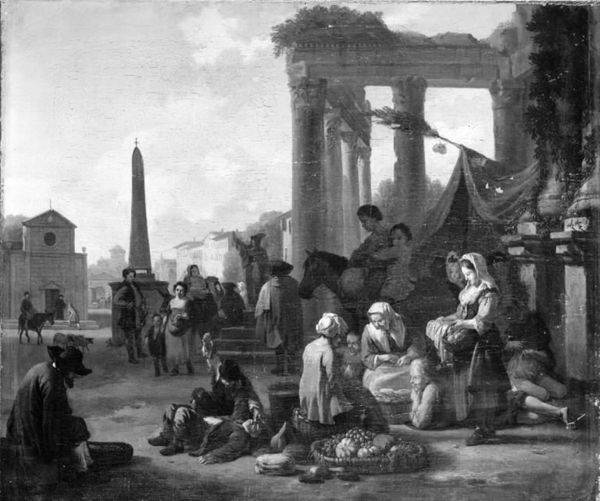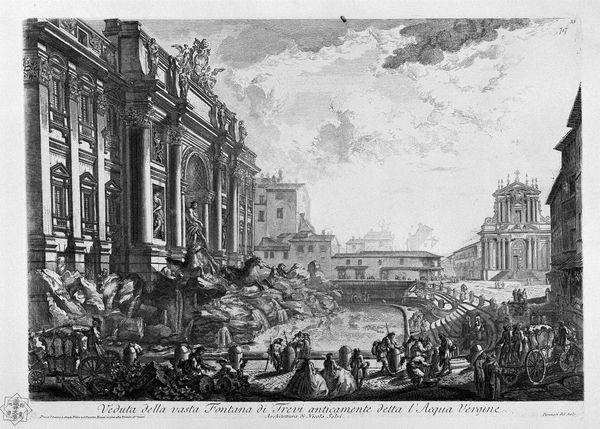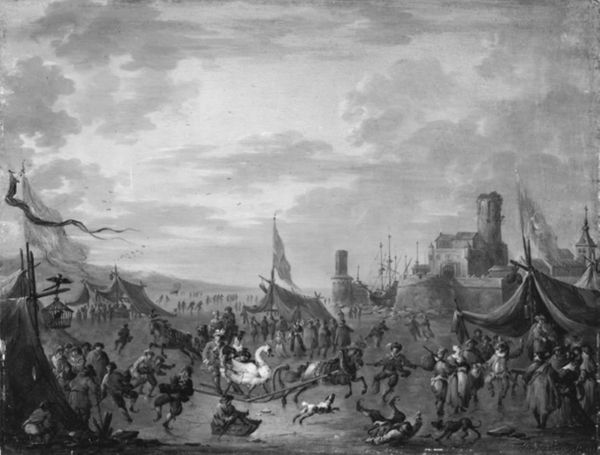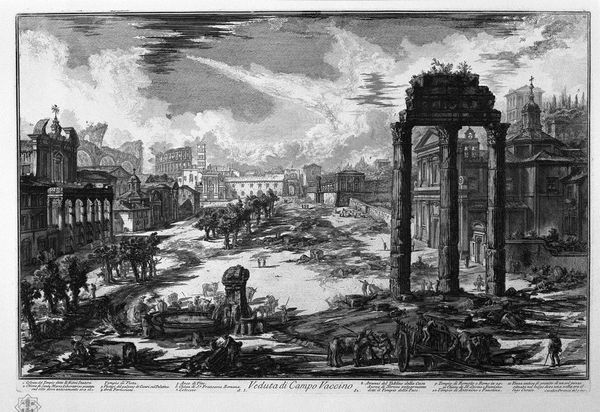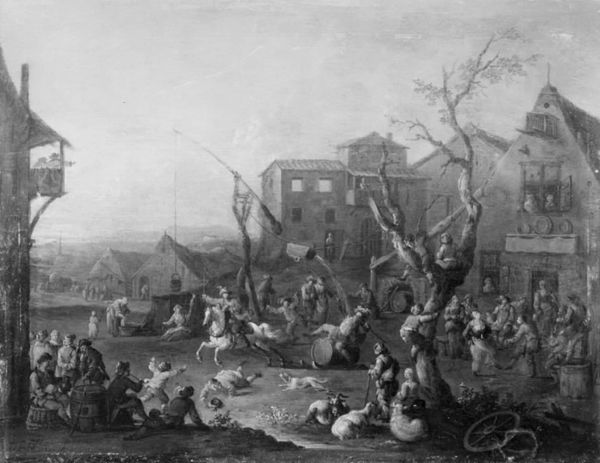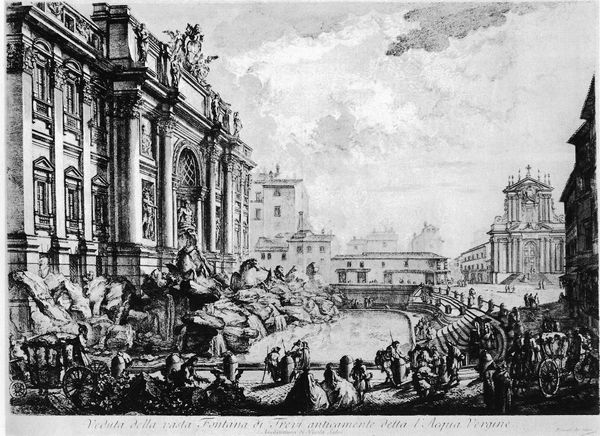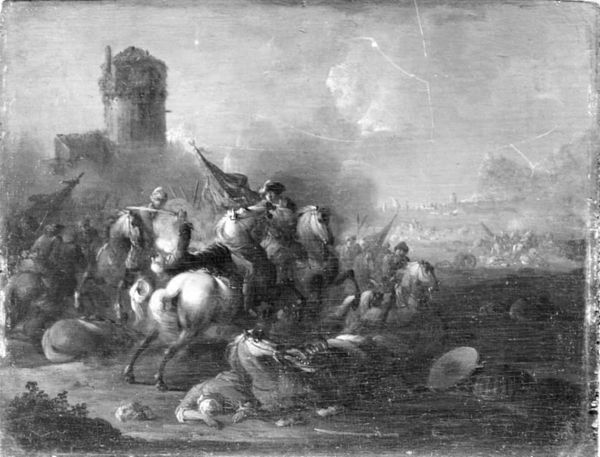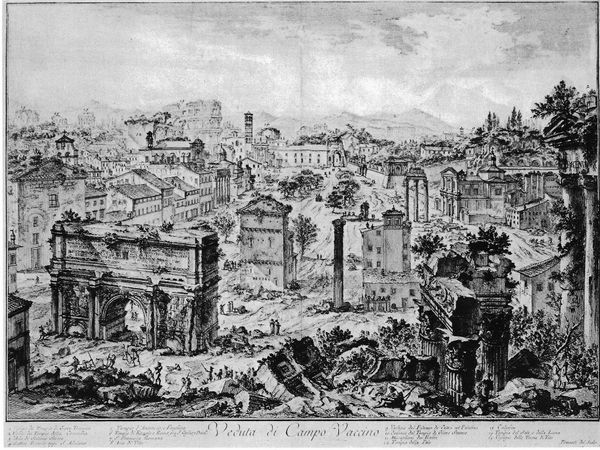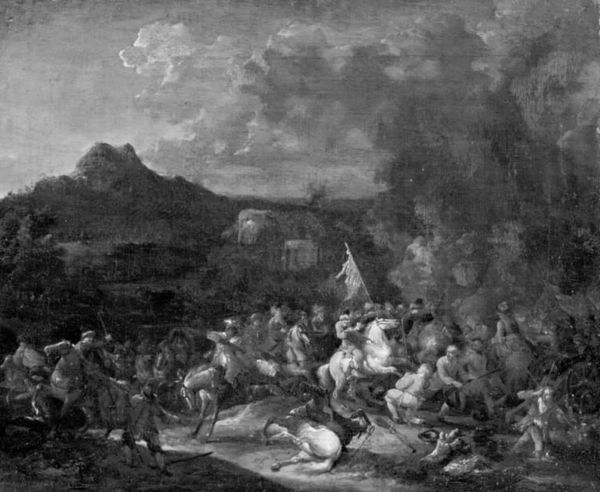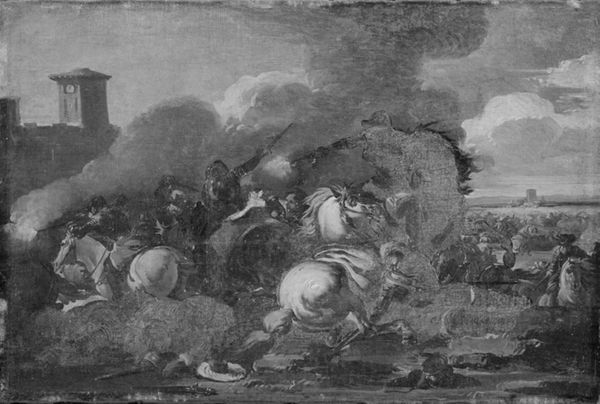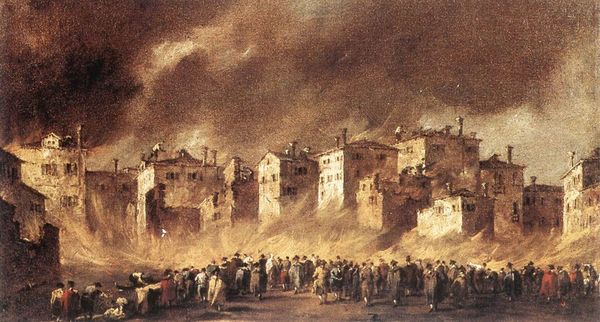
Italian Landscape with Carnival and Comedians 1709 - 1719
0:00
0:00
painting, oil-paint, wood
#
baroque
#
painting
#
oil-paint
#
landscape
#
wood
#
cityscape
#
genre-painting
#
italian-renaissance
Dimensions: 24.5 cm (height) x 32 cm (width) (Netto)
Editor: This is "Italian Landscape with Carnival and Comedians" by Arnold Frans Rubens, created sometime between 1709 and 1719 using oil paint on wood. The festive scene seems very vibrant, full of life. How do you interpret this work? Curator: Well, at first glance, it depicts a moment of public festivity. The carnival, and these characters dressed as comedians, weren't simply innocent fun. In a highly stratified society, these festivals were often a space, however temporary, for social inversion. Think about the power dynamics at play. Who is given the right to represent whom, and in what way? Editor: So, it's not just a cheerful celebration, but perhaps a commentary on the social order? Curator: Precisely. And notice the architectural elements. Classical ruins coexist with contemporary structures. This juxtaposition highlights not only the continuity of Italian culture, but also raises questions about the role of the past in shaping the present, and maybe even a nostalgic nod. How are these images being used, publicly and privately, to cement ideas around social and cultural identity? Editor: That's fascinating! I hadn't considered the blend of the historical and the contemporary. Are the figures themselves also reflective of certain social types, or political figures of the time? Curator: That’s a keen question. While pinpointing exact individuals might be difficult, it is certain the *types* of characters that Rubens decided to highlight in this painting have broader significance, speaking to the diverse roles and appearances within that social ecosystem. What effect does this scene, openly on display, have on its audiences? Editor: I guess I was only focusing on the costumes and movement, but seeing how you analyze the societal context behind it all is truly insightful. I am considering how this artwork is not just a documentation but also actively contributing to the making of that society. Thank you. Curator: It is this public facing presence that really activates it. It pushes us to ask ourselves about our contemporary engagement in art, isn’t it?
Comments
No comments
Be the first to comment and join the conversation on the ultimate creative platform.
